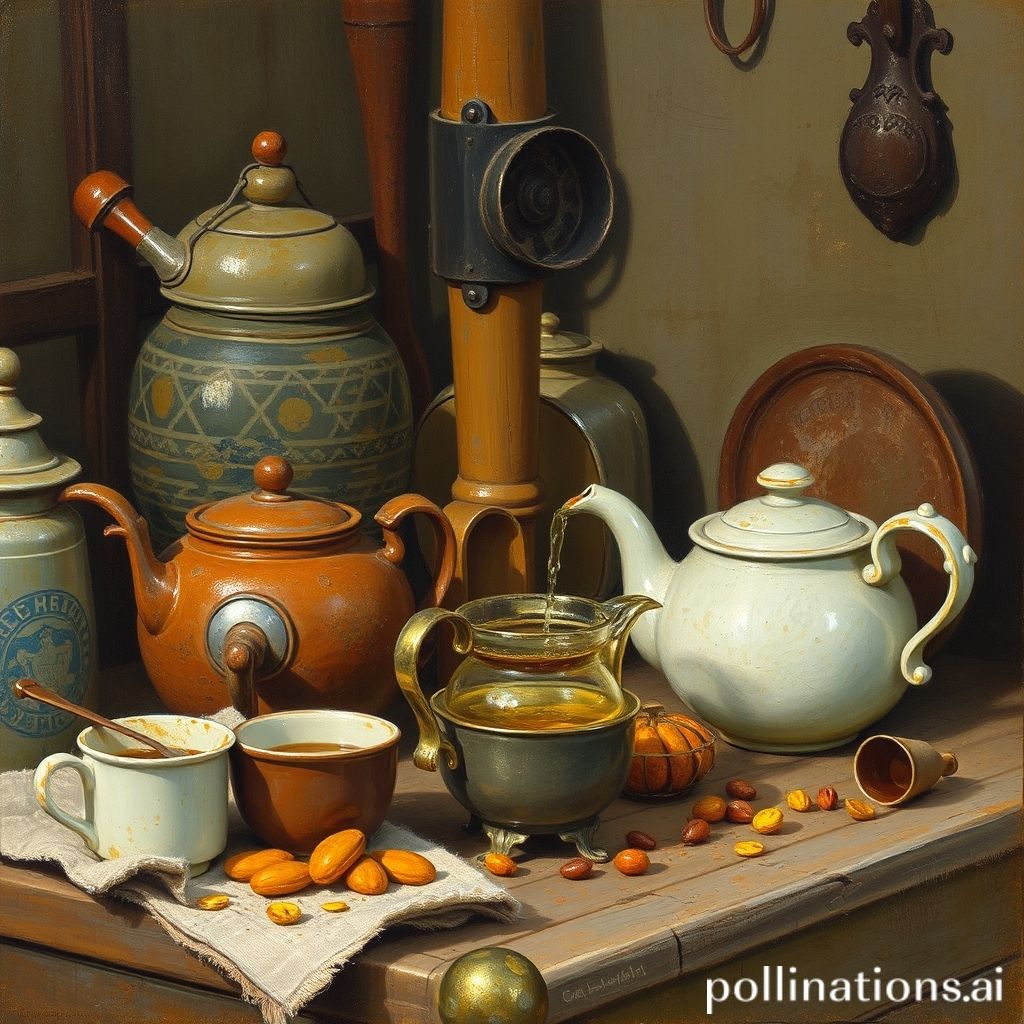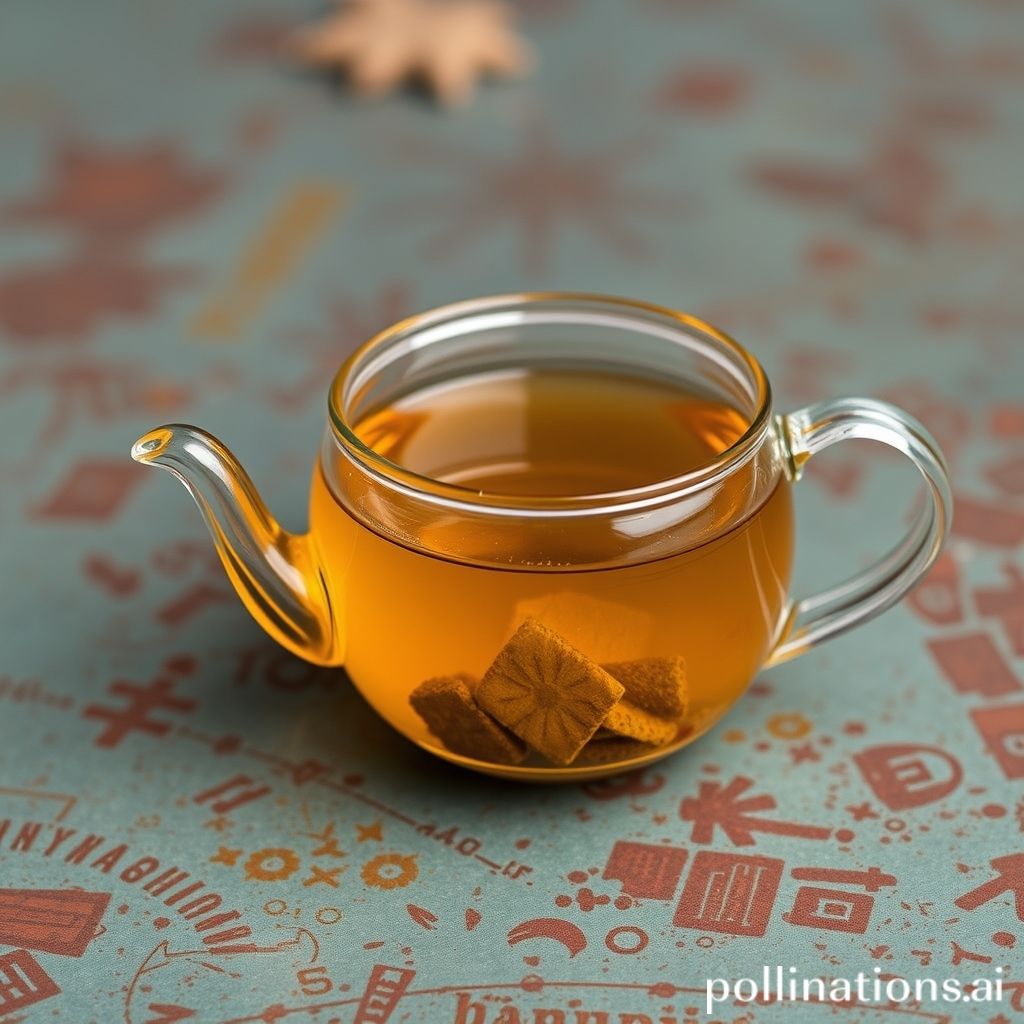All types of tea, even the simple and humble cup of builder’s, can be made in the vast world of Rust. Rust, a popular programming language known for its efficiency and reliability, offers a unique recipe for making tea.
Just like the different flavors and variations of tea, Rust provides a range of tools and techniques to brew your perfect cup. Whether you’re a seasoned programmer or just starting your coding journey, this guide will walk you through the process step by step. So grab your favorite mug and let’s dive into the wonderful world of making tea in Rust.
Rust Tea Preparation Process
In this section, we will guide you through the step-by-step process of preparing tea in Rust, a popular survival game. By complying with these instructions, you will be able to create a refreshing cup of tea to boost your character’s health and well-being.
1. Gathering Ingredients
The first step in preparing tea in Rust is to gather the necessary ingredients. You will need:
- Rust Tea Leaves: These can be found by searching bushes and plants throughout the game world.
- Water: You can collect water from rivers, lakes, or by crafting a Water Catcher near a water source.
2. Preparing the Tea Leaves
Once you have collected Rust Tea Leaves, you need to prepare them for brewing. Follow these steps:
- Harvest the Leaves: Use a tool, such as a Hatchet or a Rock, to gather the leaves from the plants.
- Dry the Leaves: Place the leaves in a Furnace or a Campfire to dry them out. This process will transform the leaves into Rust Tea.
3. Boiling Water
Now that you have your Rust Tea Leaves ready, it’s time to boil some water. Follow these instructions:
- Collect Water: Fill up a Water Jug or a Bucket with water from a river or lake.
- Ignite a Campfire: Place a Campfire outside your base and light it using Wood or Low Grade Fuel.
- Boil the Water: Put the Water Jug or Bucket on the Campfire and wait for the water to reach boiling point.
4. Infusing the Tea Leaves
With boiling water ready, it’s time to infuse the tea leaves and bring out their flavors. Follow these steps:
- Add Rust Tea Leaves: Place a few dried Rust Tea Leaves into a Cup or a Kettle.
- Pour Boiling Water: Pour the boiling water into the Cup or Kettle, covering the tea leaves.
- Let it Steep: Allow the tea leaves to soak in the hot water for a few minutes to extract their flavors.
5. Straining and Serving
Once the tea has steeped, it’s time to strain and serve it. Follow these final steps:
- Strain the Tea: Use a Strainer or a piece of cloth to separate the tea leaves, ensuring a smooth cup of tea.
- Serve and Enjoy: Pour the strained tea into a cup or mug, and enjoy your homemade Rust Tea!

Advantages of Brewing Tea in Rust
Brewing tea in rust provides numerous benefits that enhance the overall tea-drinking experience. From improved taste to the preservation of vital nutrients, there are several reasons why you should consider making tea in rust.
1. Improved Flavor
Preparing tea in rust imparts a distinct and unique flavor profile to the final beverage. The interaction between the tea leaves and the rust enhances the aromatic compounds, resulting in a more robust and flavorful cup of tea.
2. Preservation of Nutrients
Tea brewed in rust maintains a higher concentration of essential nutrients, such as antioxidants and polyphenols. The rust acts as a natural filter, ensuring that these beneficial compounds are not lost during the brewing process.
3. Rust’s Natural Heat Retention Properties
Rust, being an excellent conductor of heat, efficiently retains heat during the tea brewing process. This allows the tea to steep at an optimal temperature for a longer duration, resulting in a more flavorful infusion.
4. Traditional Brewing Method
Brewing tea in rust has a long-standing tradition in certain cultures. It is considered an authentic and traditional way of preparing tea, connecting individuals to their cultural roots and heritage.
5. Unique Brewing Experience
Making tea in rust provides a distinctive and memorable brewing experience. The visual appeal of the rusty container, combined with the unique flavor profile, adds an element of novelty to your tea-drinking routine.
| Advantages of Brewing Tea in Rust |
|---|
| Improved flavor |
| Preservation of nutrients |
| Rust’s natural heat retention properties |
| Traditional brewing method |
| Unique brewing experience |
Tips for Making Tea in Corrode
Pertaining to making tea in a corrode kettle, there are a few important tips to keep in mind to ensure a delicious and enjoyable brew. From choosing the right type of corrode to seasoning and caring for your kettle, here are some essential guidelines:
1. Choosing the right type of corrode
Not all corrode kettles are created equal, so it’s important to select one that is suitable for making tea. Look for a kettle that is made from high-quality corrode-resistant materials, such as stainless steel. This will help prevent any unwanted flavors or contaminants from seeping into your tea.
2. Maintaining cleanliness and hygiene
Before using your corrode kettle, make sure it is clean and free from any debris or corrode particles. Regularly clean your kettle by rinsing it with warm water and mild soap, and drying it thoroughly after each use. This will help prevent any buildup that may affect the taste of your tea.
3. Adjusting brewing time and temperature
Tea brewing times and temperatures can vary depending on the type of tea you are using. As a general rule, black teas typically require boiling water and a longer brewing time, In the course of green and white teas are best brewed with slightly cooler water and shorter steeping times. Experiment with different brewing parameters to find the perfect balance for your taste.
4. Experimenting with tea varieties
Don’t be afraid to explore different types of tea when using a corrode kettle. Whether you prefer traditional black teas, aromatic herbal blends, or delicate green teas, the unique characteristics of corrode kettles can enhance the flavors and aromas of your brew. Expand your tea collection and discover new favorites.
5. Seasoning and caring for your corrode kettle
Seasoning your corrode kettle is an important step to improve its performance and longevity. To season your kettle, simply boil water in it several times before using it for tea. This will help create a protective layer and reduce the risk of corrode. Additionally, make sure to dry your kettle thoroughly after each use and store it in a cool, dry place to prevent corrode formation.

Safety Precautions
Relating to making tea, it is important to take safety precautions, especially when using containers that are rusted. In this section, we will discuss the different safety considerations related to rust in tea brewing.
1. Concerns about Rust Toxicity
Rust toxicity is a major concern when using rusted containers to make tea. During rust itself is not highly poisonous, it may contain harmful substances or heavy metals depending on its source and composition. These substances can seep into the tea, posing health risks if consumed regularly.
2. Proper Rust Seasoning Process
To minimize the potential risks associated with rusted containers, it is recommended to follow a proper rust seasoning process. This process involves treating the container with a layer of rust that forms a protective coating.
Start by thoroughly cleaning the container and removing any loose rust or debris. Then, fill the container with hot water and steep a highly oxidized tea, such as black tea, for about an hour. The tannins in black tea can aid in the formation of a protective layer over the rust.
After the seasoning process, rinse the container thoroughly and check for any loose rust particles. If there are significant rust flakes, it is best to avoid using the container for brewing tea.
3. Regular Inspection and Maintenance of Rust
Regularly inspecting and maintaining rusted tea brewing containers is crucial for ensuring safety. Periodically check the container for any signs of rust deterioration or flaking.
If you notice rust spots or flakes, it is recommended to retire the container or consider re-seasoning it. Additionally, remember to clean the container after each use to prevent the accumulation of rust and other contaminants.
4. Alternative Brewing Methods for Rust Concerns
If you are worried about using rusted containers for tea brewing, there are alternative methods available:
- Stainless Steel: Choose stainless steel tea infusers, teapots, or brewing baskets, as they are resistant to rust and provide a safe brewing experience.
- Glass or Ceramic: Consider using glass or ceramic teapots or mugs, as they are free from rust-related concerns and allow you to enjoy your tea without any safety worries.
- Silicone Infusers: Silicone tea infusers are another excellent option for rust-free brewing. They are flexible, easy to clean, and do not pose any risks of rust toxicity.
| Details |
|---|
| The toxicity of rust can vary depending on its source and composition. |
| Follow a proper rust seasoning process to create a protective layer. |
| Regularly inspect and maintain rusted tea brewing containers. |
| Consider alternative brewing methods using stainless steel, glass, ceramic, or silicone. |
Conclusion
Learning how to make tea in rust is a simple yet rewarding process. By conforming to the steps outlined in this article, you can enjoy a perfectly brewed cup of tea that is rich in flavor and free from any metallic taste.
Remember to choose high-quality rust-free tea kettles or pots to ensure the best results. With a little patience and practice, you can master the art of making tea in rust and savor its unique taste. So, go ahead and indulge in the comforting ritual of brewing tea, embracing the fusion of tradition and innovation.
FAQ about Rust Tea
FAQ 1: Can I use any type of rust for making tea?
No, it is not recommended to use any type of rust for making tea. Rust is formed when iron or steel reacts with oxygen and moisture, and it can contain harmful substances. It is best to use safe and clean tea-making materials.FAQ 2: Is rust tea safe to consume?
No, consuming rust tea is not safe. Rust contains iron oxides that can be harmful to your health. It is advisable to avoid consuming any liquid made with rust.FAQ 3: How often should I season my rust kettle?
Rust kettles should not be seasoned as rust is not suitable for making tea. It is recommended to use kettles made from materials that are specifically designed for tea brewing. These materials are safe and will provide a better tea-drinking experience.FAQ 4: Can I use rust tea kettles on electric stoves?
No, it is not recommended to use rust tea kettles on electric stoves. Rust kettles are not suitable for tea brewing, and using them on electric stoves can be hazardous. It is better to use tea kettles made from safe materials that are compatible with electric stoves.FAQ 5: Are there any specific tea varieties that work best with rust brewing?
No, there are no specific tea varieties that work best with rust brewing because rust is not a recommended material for making tea. It is advisable to use tea-making materials that are safe, clean, and specifically designed for brewing tea.Read Similar Post:
1. Is Chai Tea Vegan?
2. Is Chamomile Tea Good For Allergies?

